Disclosure: This article contains affiliate links. We may earn a commission from purchases at no extra cost to you, which helps our travel content.
There's something deeply satisfying about visiting a destination where history doesn't simply reside in museums but permeates every cobblestone street and weathered façade. Evora, nestled in Portugal's sun-drenched Alentejo region, is precisely such a place—a living museum where 2,000 years of architectural evolution coexist in remarkable harmony. As someone who grew up surrounded by Frankfurt's juxtaposition of medieval structures and glass skyscrapers, I've always been fascinated by cities that showcase architectural continuity. Evora, however, offers something uniquely precious: an almost perfectly preserved medieval center encircled by walls that have witnessed the rise and fall of civilizations. Mein Gott, what a revelation this compact UNESCO World Heritage site proved to be during my spring weekend visit! From Roman columns to Gothic cathedrals, Moorish influences to distinctive Manueline flourishes, Evora presents a masterclass in architectural evolution that would impress even the most discerning German engineering mind. But beyond its structural marvels, I discovered something equally valuable—a rhythm of life that prioritizes craftsmanship and tradition in ways that reminded me of childhood visits to small Bavarian towns with my father.
First Impressions: Evora's Architectural Symphony
Arriving in Evora feels like stepping into a perfectly preserved architectural textbook. The city's compact historical center presents a remarkably intact medieval layout that immediately appealed to my German appreciation for orderly design. Yet within this structured framework, there's a distinctly Portuguese spontaneity that creates a fascinating tension between precision and organic development.
The Roman Temple of Evora (incorrectly but commonly called the Temple of Diana) provided my first architectural revelation. Standing before these 2,000-year-old Corinthian columns against the backdrop of medieval buildings created a striking visual dialogue between eras. As an architecture enthusiast, I was immediately drawn to analyze the structural integrity that has allowed these columns to withstand two millennia of history. The precision of Roman engineering is evident in the perfectly balanced proportions—a reminder that good design principles transcend time.
Moving from Roman classicism to Gothic grandeur, Evora's Cathedral (Sé de Évora) demonstrates the evolution of architectural thinking. I spent nearly two hours examining its transitional design elements, particularly fascinated by the fortress-like exterior that reflects Portugal's tumultuous medieval period. The cloisters, with their geometric precision and intricate marble work, showcase the mathematical understanding that underpinned medieval construction techniques—a reminder that architecture has always been as much science as art.
What struck me most forcefully was how Evora's skyline creates a coherent visual narrative despite spanning centuries of development. From my vantage point at the city walls, I could trace architectural evolutions that would normally require visiting multiple European cities. This compression of architectural history into one walkable area makes Evora uniquely valuable for anyone interested in understanding how building traditions evolve in response to changing cultural and political circumstances.
For architectural photography enthusiasts, I'd recommend bringing a wide-angle lens to capture Evora's narrow streets and architectural details. The golden hour light here transforms the limestone and marble structures into a photographer's dream canvas, with the warm tones highlighting textures that remain hidden during harsh midday sun.
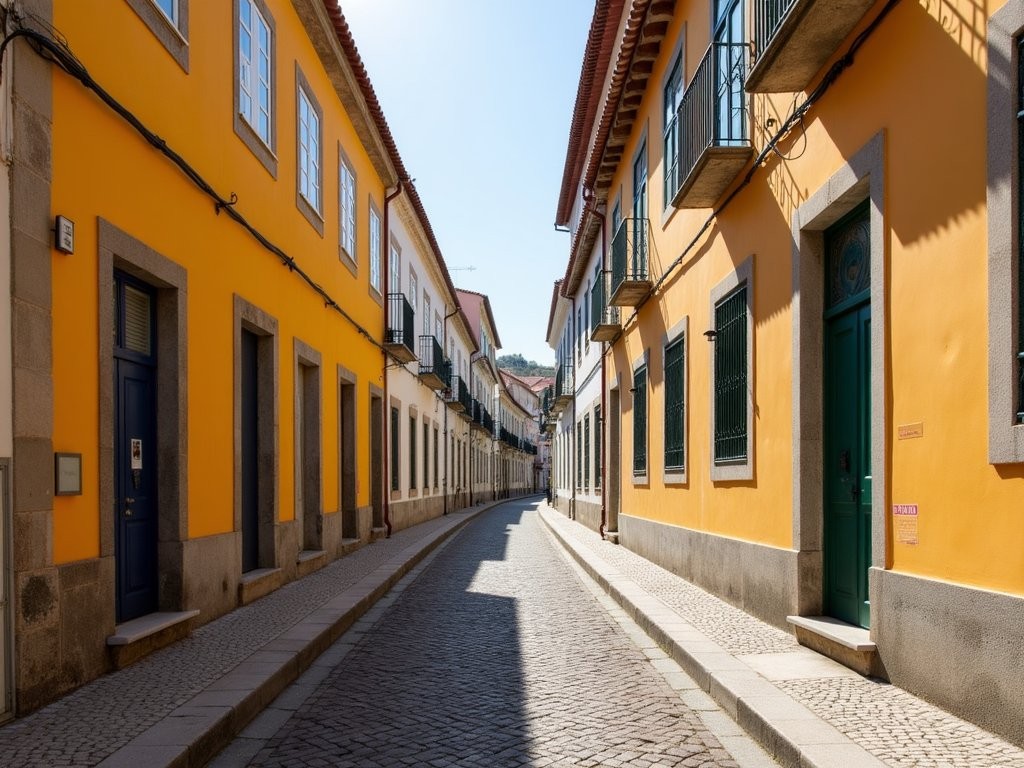
💡 Pro Tips
- Visit the Roman Temple early morning or late afternoon when the light dramatically enhances the texture of the ancient columns
- Purchase a combined ticket for the Cathedral and its tower to access spectacular rooftop views of the architectural landscape
- Look for the subtle Moorish influences in doorways and window designs throughout the old quarter
The Chapel of Bones: Memento Mori in Architectural Form
"We bones that here are, for yours await"—this inscription greeting visitors to Evora's Capela dos Ossos (Chapel of Bones) establishes immediately that this is no ordinary architectural space. As someone accustomed to the clean lines and functional efficiency of German design, encountering this macabre masterpiece was both jarring and profound.
The chapel, constructed by Franciscan monks in the 16th century, represents architecture with explicit philosophical intent. Using the bones and skulls of an estimated 5,000 individuals, the monks created not merely decoration but a powerful meditation on mortality. From a supply chain perspective (which my professional mind couldn't help considering), this represents an extraordinary example of repurposing available materials to serve a new function—though admittedly a rather unusual application of resource management principles.
What fascinates me most about the Chapel of Bones is how it challenges our modern architectural tendency to create spaces that distract from death rather than confront it. The deliberate arrangement of human remains—skulls positioned at regular intervals to create visual rhythm, femurs aligned with mathematical precision—demonstrates a design sensibility that refuses to separate aesthetic considerations from existential ones.
The chapel's vaulted ceiling, adorned with death motifs painted with remarkable technical skill, creates a complete environmental experience. This integration of structural elements, decorative components, and philosophical message achieves what we might now call a "total design" approach. Despite its macabre nature, I found myself appreciating the honest craftsmanship evident throughout.
Photographing this space presented unique challenges. The low lighting conditions required a travel tripod to capture the intricate details without blur. While many visitors rush through, visibly uncomfortable, I recommend allowing at least 30 minutes to appreciate the craftsmanship and intentionality behind this unusual architectural statement.
The experience reminded me of childhood visits to the ossuary at St. Michael's in Hallstatt, Austria, with my father, who used such moments to discuss Vergänglichkeit—the transience of life—a concept the Chapel of Bones expresses with unflinching clarity.
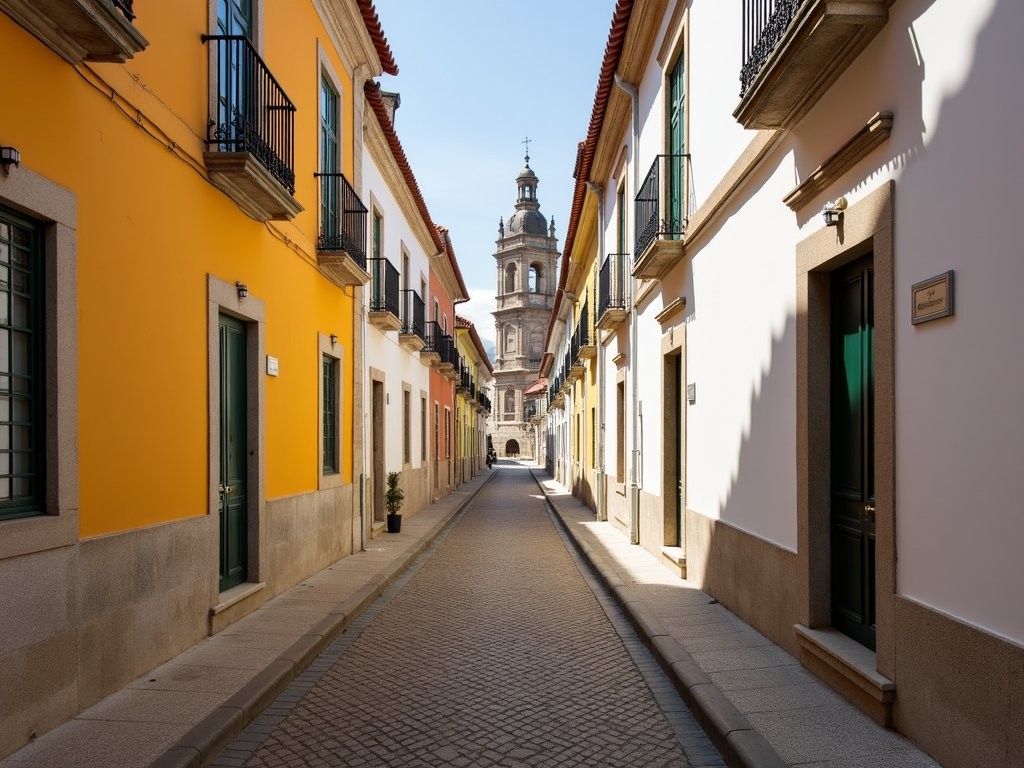
💡 Pro Tips
- Visit early in the day to avoid crowds and have time for quiet reflection
- Look for the two desiccated corpses hanging from chains—including one said to be a child who was cursed by his mother
- Notice how the monks arranged certain bones to create decorative patterns, showing remarkable aesthetic consideration
Culinary Heritage: Where Tradition Meets the Plate
If architecture represents the physical manifestation of cultural values, then cuisine surely embodies their sensory expression. Evora's culinary landscape reveals the same commitment to tradition and authenticity that characterizes its built environment. As someone raised on hearty German fare who appreciates technical precision in all things—including cooking—I found Alentejo's approach to food deeply satisfying.
The region's cuisine follows what I recognize as sound supply chain principles: locally sourced ingredients, minimal waste, and processes refined over generations for maximum efficiency and quality. This is perhaps most evident in the preparation of carne de porco à alentejana, a dish combining pork with clams that initially struck me as an unusual pairing. The logic became clear upon learning about the region's history of resource scarcity—the recipe represents ingenious protein maximization rather than culinary whimsy.
At Restaurante Dom Joaquim, I experienced what might be called the Präzisionsarbeit (precision work) of traditional Alentejo cooking. The açorda alentejana—a bread soup with coriander, garlic, and poached eggs—demonstrated how simple ingredients can achieve remarkable complexity through exact technique. The server explained that the bread must be precisely the right staleness, the olive oil of specific regional origin, and the garlic crushed rather than minced to release its oils properly. This attention to process variables would impress any German engineer.
The wine culture of Alentejo provided another revelation. At Adega da Cartuxa, I toured production facilities where centuries-old methods coexist with modern technology in a balanced system that would satisfy any supply chain manager's efficiency requirements. Their approach to aging wine in clay amphorae (called talhas locally) rather than oak barrels for certain varieties demonstrates a respect for regional tradition that transcends trend-chasing.
Perhaps most impressive was my discovery of Evora's pastry tradition at Pastelaria Conventual Pão de Rala. The pastel de toucinho showcases the monastic origins of Portuguese sweets—recipes developed by nuns who used egg yolks abundantly as the whites were needed for clarifying wine and starching religious garments. This historical connection between religious practice and culinary development fascinates me as an example of how practical solutions evolve into cultural traditions.
For those interested in bringing home authentic flavors, I recommend purchasing Portuguese olive oil directly from producers in the region. The quality far exceeds what you'll find in typical export versions, with a complexity that reflects the specific soil conditions of Alentejo.
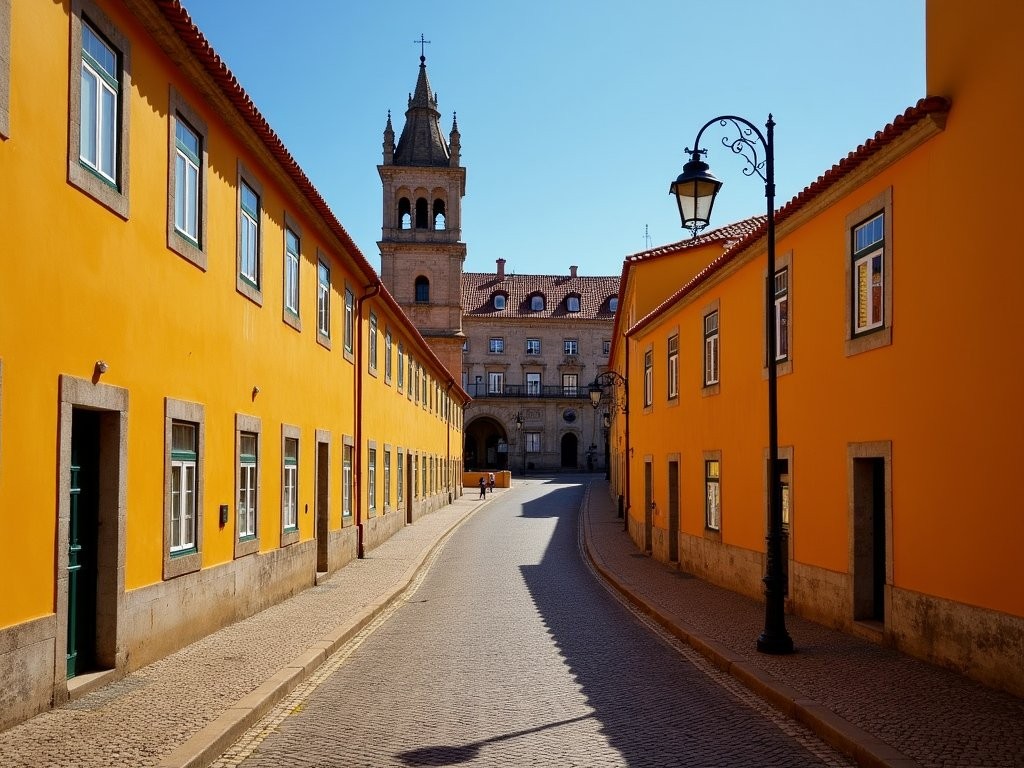
💡 Pro Tips
- Reserve dinner at Restaurante Dom Joaquim at least two days in advance—their authentic Alentejo cuisine makes it perpetually busy
- Visit Adega da Cartuxa winery to understand how traditional clay pot fermentation influences wine character
- Try the regional black pork (porco preto) raised on acorns for a uniquely flavorful meat experience
Beyond the Walls: Cork Forests and Megalithic Monuments
While Evora's architectural treasures could easily consume an entire weekend, venturing beyond the city walls reveals landscapes and monuments that provide crucial context for understanding the region's cultural development. As someone who appreciates both natural systems and built environments, I found these excursions essential to comprehending Evora's place in Portugal's cultural tapestry.
Just 15 kilometers outside Evora stands the Cromeleque dos Almendres, one of Europe's most significant megalithic complexes. Dating from approximately 6000-4000 BCE, this arrangement of 95 standing stones predates Stonehenge by about 2,000 years. What struck me immediately was the site's integration with its landscape—positioned to align with equinox sunrises and with stones arranged in a pattern that responds to the natural topography. This early example of human architectural intervention demonstrates a sophisticated understanding of both celestial mechanics and environmental context.
The megalithic site receives relatively few visitors compared to Evora's urban attractions, creating an atmosphere conducive to contemplation. Standing among stones that have witnessed eight millennia of human history provides perspective that even the oldest city buildings cannot match. For photographers, the early morning light creates dramatic shadows that emphasize the stones' textures and arrangements. I'd recommend bringing a polarizing filter to enhance the contrast between the granite stones and the frequently dramatic Alentejo sky.
Equally impressive in a different way are Alentejo's cork forests, which represent one of the world's most sustainable agricultural systems. As a supply chain professional, I was fascinated by the nine-year harvesting cycle that allows trees to regenerate completely between harvests. The stripped trees with their distinctive reddish trunks create a landscape unlike any other I've encountered—simultaneously natural and cultivated.
At Herdade da Maroteira, I toured a working cork estate that has operated for generations. The harvesting process remains largely unchanged for centuries: skilled workers using specially designed axes remove cork bark with precision that prevents damage to the living layer beneath. This is Handwerkskunst (craftsmanship) of the highest order, with workers developing techniques that cannot be mechanized effectively. The estate owner explained that a single mistake can render a tree unproductive for decades—a sobering reminder of how human skill remains irreplaceable in certain contexts.
The cork industry represents a remarkable example of sustainable economic development that predates our modern environmental consciousness by centuries. These forests sequester carbon, prevent desertification, and support extraordinary biodiversity while providing livelihoods for local communities—a model of balanced resource management that modern industries would do well to study.
Witnessing both megalithic monuments and traditional cork harvesting in a single day creates a powerful sense of temporal continuity. From prehistoric stone arrangements to sustainable agricultural practices developed over centuries, the Alentejo landscape reveals how human interaction with the environment evolves while maintaining certain fundamental principles of respect and balance.
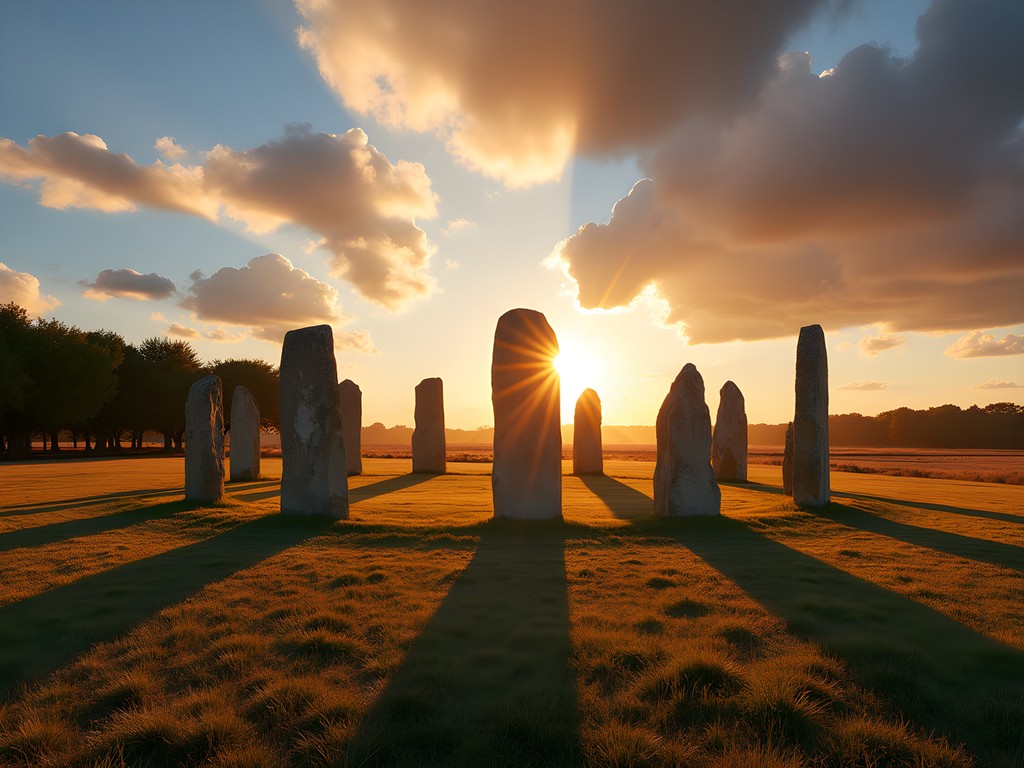
💡 Pro Tips
- Visit Cromeleque dos Almendres early morning or late afternoon when the light enhances the stones' textures and fewer tourists are present
- Book a cork forest tour in advance through Herdade da Maroteira for an in-depth understanding of sustainable harvesting practices
- Bring sturdy walking shoes as the megalithic sites involve uneven terrain and moderate hiking
Artisanal Traditions: Pottery, Textiles, and Craftsmanship
Growing up in Germany instilled in me a deep appreciation for Handwerkskunst—craftsmanship that prioritizes quality, durability, and aesthetic integrity. Evora and the surrounding Alentejo region maintain craft traditions that resonate with this value system, though expressed through distinctly Portuguese materials and techniques. Exploring these living traditions became one of the most rewarding aspects of my visit.
The pottery tradition of São Pedro do Corval, a short drive from Evora, exemplifies the persistence of pre-industrial production methods in contemporary contexts. At Olaria Patalim, fourth-generation potter Feliciano Meira Agostinho demonstrated techniques virtually unchanged since medieval times. What fascinated me was not merely the preservation of traditional methods but their continued economic viability—these aren't museum demonstrations but functioning businesses producing items for everyday use.
The distinctive red clay of the region determines many aspects of the pottery's character, from its warm terracotta color to specific throwing techniques developed to accommodate the clay's unique properties. This represents a perfect example of how material constraints shape cultural expressions—the pottery couldn't exist in this form anywhere else because it responds directly to local geological conditions.
In Evora itself, I discovered the textile traditions of Alentejo at Capuchas workshop, where artisans produce the region's distinctive woolen capes and blankets. The geometric patterns woven into these textiles communicate regional identity through a visual language developed over centuries. Master weaver Maria Charrua explained how specific motifs originated in Moorish influences, while others represent stylized agricultural tools or local flora—a textile vocabulary that tells the region's history through pattern and color.
What struck me most powerfully about these craft traditions was their integration into contemporary life. Unlike many European craft traditions that survive primarily as tourist attractions, Alentejo's crafts maintain authentic connections to daily life. Local restaurants serve food in regional pottery; farmers still use traditional woolen capes during winter work; cork products appear throughout daily contexts rather than merely as souvenirs.
For visitors interested in bringing home authentic craft items, I recommend the travel document organizer to safely store any fragile purchases. The compact design protects smaller items while keeping your travel documents organized—something my German sensibilities particularly appreciate.
The economic challenges facing these traditions are significant—mass production and changing consumer habits threaten their sustainability. Yet witnessing young apprentices working alongside master craftspeople provided hope that these knowledge systems will continue evolving rather than becoming museum pieces. Several workshops have developed innovative business models combining traditional production methods with contemporary design sensibilities, creating pieces that honor historical techniques while appealing to modern aesthetic preferences.

💡 Pro Tips
- Visit São Pedro do Corval on weekdays when you can observe potters actively working rather than just displaying finished products
- Look for the 'Alentejo Craft Route' signs that identify authentic workshops adhering to traditional production standards
- Ask artisans about apprenticeship programs—many welcome questions about how they're preserving knowledge for future generations
Practical Logistics: Navigating Evora with German Efficiency
As someone who approaches travel planning with what my American friends teasingly call "typical German thoroughness," I've developed strategies for experiencing Evora efficiently without sacrificing depth of engagement. The city's compact historical center makes it eminently walkable, though certain logistical considerations can enhance your experience considerably.
Accommodation selection significantly impacts your Evora experience. While modern hotels outside the walls offer contemporary amenities, I chose to stay at Pousada Convento de Évora, housed in a former 15th-century monastery. The slight premium in cost delivered immeasurable value through architectural authenticity and historical context—waking up in a converted monk's cell with vaulted ceilings and stone walls provided a connection to the city's past that no modern construction could match.
Navigating Evora's narrow streets presents challenges for drivers accustomed to modern urban layouts. If arriving by car, I strongly recommend using parking facilities outside the walls and proceeding on foot. The city's medieval street pattern was designed for pedestrians and horse-drawn carts—not rental cars. The primary parking area near Porta de Avis provides reasonable rates and places you within minutes of the historical center.
For day-trip planning, I found that renting a car offered the most efficient solution for visiting outlying sites like the megalithic monuments and cork forests. Public transportation exists but runs on limited schedules that constrain your flexibility. Local company AutoEuropa provided excellent service with transparent pricing—a relief after experiences with less forthright rental agencies elsewhere in southern Europe.
Regarding walking routes, I developed a systematic approach that maximized efficiency without sacrificing discovery opportunities. Rather than following the numbered tourist route precisely, I used it as a framework while allowing for deliberate detours down promising side streets. This balanced structure with serendipity—a combination that satisfies both my German appreciation for order and my traveler's desire for unexpected discoveries.
For digital navigation, I recommend downloading offline maps before arrival. While Evora has generally good connectivity, signal strength varies within thick-walled historical buildings. A portable power bank proved essential for full-day explorations, as navigation apps deplete phone batteries quickly. The compact design adds minimal weight while ensuring you won't miss photo opportunities due to dead devices.
Time management deserves special consideration in Evora. Many historical sites close between 1:00-3:00 PM, reflecting traditional Portuguese scheduling rather than tourist convenience. This midday closure actually creates an excellent opportunity to experience local dining culture, as set lunch menus (menu do dia) offer exceptional value while introducing you to authentic regional cuisine. Restaurant Dom Joaquim and Taberna Típica Quarta Feira both serve excellent midday meals that showcase Alentejo specialties.

💡 Pro Tips
- Purchase the combined ticket (Circuito Evora) for access to multiple monuments at a significant discount
- Schedule cathedral visits for early morning when light through the east-facing stained glass is most dramatic
- Carry a water bottle—Evora's summer temperatures regularly exceed 35°C/95°F and public fountains are limited
Final Thoughts
As my weekend in Evora drew to a close, I found myself reflecting on how this compact Portuguese city embodies what Germans call Zeitgeist—the spirit of time itself. Few places I've visited so powerfully demonstrate the continuity of human experience across millennia, from megalithic stone circles to Roman engineering, medieval religious expression to contemporary craft traditions. What makes Evora exceptional isn't merely the preservation of historical artifacts but the living connection between past and present—a cultural continuity that feels increasingly rare in our rapidly changing world.
For travelers seeking more than superficial encounters with photogenic landmarks, Evora offers something profoundly valuable: an opportunity to witness how cultural identity persists through centuries of political, economic, and social transformation. The architectural precision of Roman columns stands in dialogue with the existential meditation of the bone chapel; traditional cork harvesting methods coexist with UNESCO World Heritage preservation efforts; ancient pottery techniques adapt to contemporary markets without sacrificing authenticity.
I invite you to experience Evora not merely as a collection of monuments but as a living testament to cultural resilience and continuity. Auf Wiedersehen until my next architectural adventure!
✨ Key Takeaways
- Evora offers an exceptionally complete architectural timeline spanning 2,000+ years in one walkable area
- The region's craft traditions remain economically viable rather than existing solely as tourist attractions
- Venturing beyond city walls to megalithic sites provides crucial context for understanding the region's cultural development
- Spring visits offer ideal temperature and light conditions for architectural photography and outdoor exploration
📋 Practical Information
Best Time to Visit
Spring (April-May) or Fall (September-October)
Budget Estimate
€100-150 per day including accommodation, meals and attractions
Recommended Duration
2-3 days minimum, ideally a long weekend
Difficulty Level
Easy


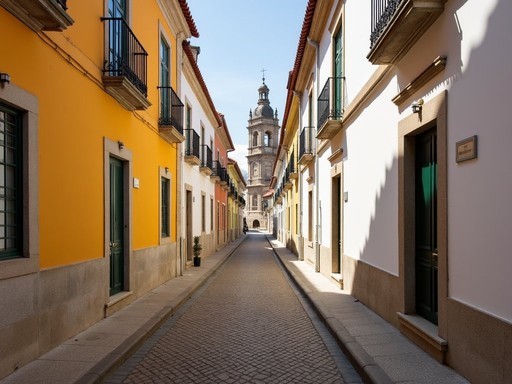
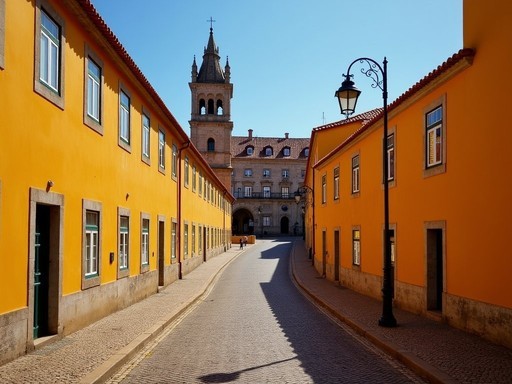

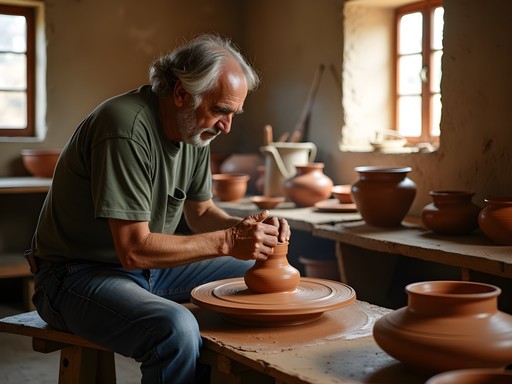
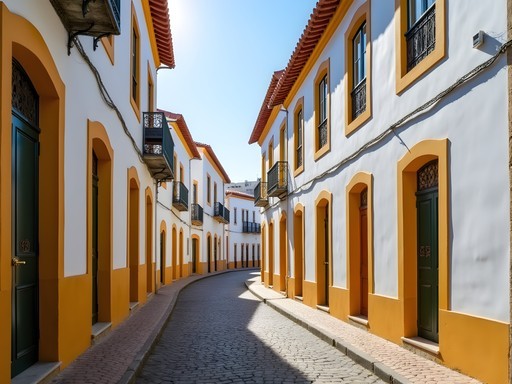


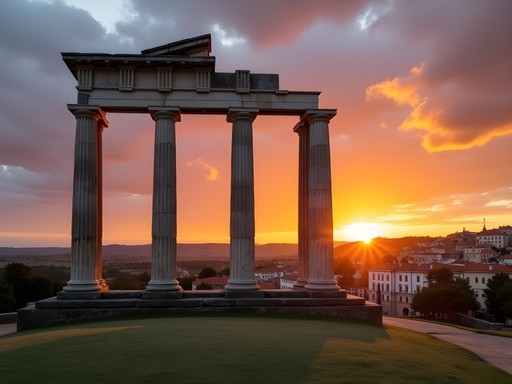






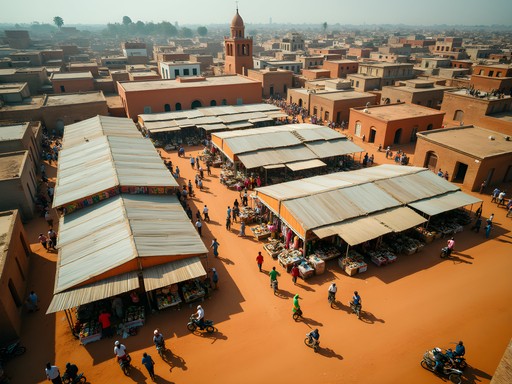
Comments
happyway
OMG that food looks amazing!! 😍 Those black pork dishes you mentioned - definitely on my must-try list now!
backpackseeker
Planning a trip to Portugal next spring and thinking of adding Evora to my itinerary. How many days would you recommend staying there? And is it easy to reach those megalithic sites without a car? I'll be relying on public transportation. Thanks for the informative post!
Kyle Hamilton
Hi backpackseeker! I'd recommend 2 full days minimum. The historic center is compact but deserves unhurried exploration. For the megalithic sites, I hired a local guide with transportation for half a day - well worth it as they're scattered across the countryside. Public transport won't get you there easily. I used this guidebook which has good details on local tour operators.
backpackseeker
Thanks Kyle! That's super helpful. Will look into local guides then.
Taylor Moreau
Excellent write-up on Evora, Kyle. I was there last autumn for a business conference and managed to squeeze in some sightseeing. The Chapel of Bones is truly haunting - I found myself contemplating mortality in a way I hadn't expected. Your description captures that atmosphere perfectly. One tip for others: the early morning light on the Roman Temple is spectacular for photography, and you'll avoid the tour groups that arrive mid-morning. I'd recommend staying at least one night to experience the city after the day-trippers leave - completely different atmosphere.
summerrider
Was the Chapel of Bones as creepy as it looks in these photos? Not sure if I could handle it!
Taylor Moreau
It's certainly unsettling, but more thought-provoking than frightening. The inscription at the entrance translates to 'We bones await yours' - a memento mori that stays with you.
summerrider
Those megalithic monuments look incredible! Been wanting to visit Portugal for ages.
happyway
Same! I've only been to Lisbon but Evora looks like it has so much more history!
greenseeker
Thanks for highlighting the cork forests! I had no idea Portugal produces over half the world's cork supply. The way you described the harvesting process made me want to take one of those eco-tours. Anyone know the best season to see the freshly harvested trees with their reddish trunks?
Nicole Russell
Cork harvesting happens in summer - June through August is prime time! The contrast between the dark bark and exposed reddish trunks is stunning for photos. Most tours from Evora will take you to forests where you can see trees in different stages of regrowth.
starperson
Just got back from Portugal last week and spent two days in Evora. The Cathedral's rooftop tour gives amazing views of the entire city! Also, don't miss the traditional pastries at Pastelaria Conventual Pão de Rala - incredible egg-based sweets from old convent recipes.
beachrider
Those cork souvenirs were so unique! Got a wallet still going strong 2 years later.
starwalker
How's the weather in September? Good time to visit?
Kyle Hamilton
September is fantastic! Much cooler than summer (which can be brutally hot in Alentejo) but still warm and sunny. Perfect for exploring.
Douglas Bradley
Excellent cultural analysis of Evora, Kyle. What fascinated me most during my visit was how the city represents layers of Portuguese history - Roman, Moorish, and Medieval Christian elements all coexisting in such a compact space. The megalithic monuments outside the city are often overlooked by tourists rushing between Lisbon and the Algarve. I spent a full day exploring Almendres Cromlech and was the only visitor for hours. For anyone planning to visit, I recommend bringing a good pair of walking shoes and travel guide as many sites outside the city center have minimal signage. The local wine region (Alentejo) also deserves attention - some of Portugal's best wines at very reasonable prices.
greenseeker
Douglas, did you rent a car to reach the megalithic sites? I'm trying to figure out if public transportation is feasible or if I should budget for a rental.
Douglas Bradley
I did rent a car, which gave me flexibility. Public transport to the megalithic sites is limited. If you're on a budget, there are some local tours that depart from Evora's main square for around €25-30. Well worth it!
skyninja
Those photos of the Roman Temple are stunning! Adding Evora to my bucket list for sure.
Venture X
Premium card with 2X miles, $300 travel credit, Priority Pass